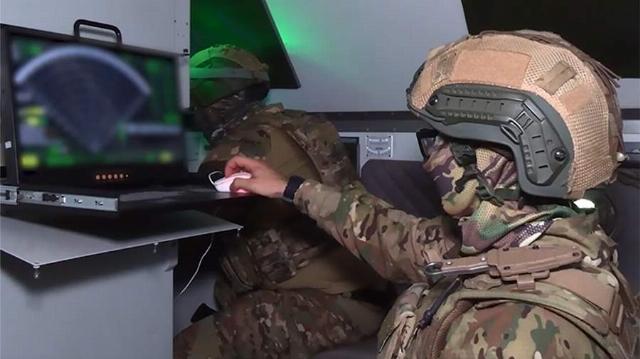Military personnel of the North group of forces of the Armed Forces of the Russian Federation use the new Irbis radar station during a special military operation. This was announced on July 7 by the Russian Ministry of Defense.
In the footage, the carefully camouflaged Irbis radar station quickly drives along a forest plantation and hides in the shade of trees. The driver deftly parks the massive installation, after which two fighters jump out of the cockpit with plastic briefcases — electronic warfare installations and anti-drone guns. Taking up positions on both sides of the car, they begin to monitor the sky in search of copters, the Ministry of Defense added.
It is noted that the system allows you to conduct reconnaissance deep into enemy territories for 150 km, which is very important in combat conditions. Literally any enemy firing units can be detected with the help of the "Snow Leopard". Mortar units, cannon and rocket artillery, as well as aerial targets, including drones.
"From experience, I can say that the station is better than previous radar samples, because it is more maneuverable, the time for occupation and departure from positions is much faster. Well, the reconnaissance range is much further. Detects all types of enemy fire units: mortar units, cannon and rocket artillery of the enemy. The station can also detect aerial targets. That is, aircraft that are in the sky, drones, and airplanes too. We conduct reconnaissance, detect the target and immediately transfer it to the control points of the firing units. <...> In addition to identifying enemy firing points, we also adjust the fire of our artillery. Thus, counter—battery warfare turns out to be more effective," said the commander of the calculation of the Irbis radar station with the call sign Sector.
It is clarified that thanks to the station, our fighters have repeatedly stopped attempts by militants of the Armed Forces of Ukraine (AFU) to strike at civilians. Any missile is detected by radar, and information is promptly transmitted to air defense units. Artillery units interact especially closely with radio intelligence officers.
Having found the target, the crew of the Irbis transmits the coordinates to the firing units and, if necessary, also corrects their work. According to the fighters, this significantly increases the effectiveness of counter-battery warfare. The installation operator with the call sign Skif quickly launches several monitors, enters the coordinates necessary for satellites and rotates the locator to a predetermined angle.
"I define goals at the operator's workplace and pass the goals to the commander. In principle, the system is fully automated, but sometimes intervention is still required. <...> The station is operational and ready to perform a combat mission in any weather. No wind, no rain, no sun — nothing gets in the way. This is a very useful station. We determine the nature of the targets and save the lives of our comrades by transmitting targets and coordinates to units that launch the bird, conducting their own additional reconnaissance, and visually identify targets and then work on them with artillery or other means," shared the operator of the Irbis radar with the call sign Skif.
Earlier, on July 6, it was reported that Russian forces liberated the village of Sokol in the Donetsk People's Republic (DPR). It is noted that the settlement was taken under control by units of the Center group of troops. They also defeated formations of the 24th mechanized, 59th motorized Infantry, 46th airmobile brigades of the Armed Forces of Ukraine (AFU).
Prior to that, on July 5, it was reported that the new radar warfare system (EW) "Umbrella" went to the zone of its own. According to the developer, this is a system that allows you to cover military and civilian facilities with a protective dome within a radius of up to 500 m. The development is mainly focused on protecting equipment from FPV drones. It can be used both in transport and in stationary facilities.
The special operation to protect Donbass, which was announced by Russian President Vladimir Putin on February 24, 2022, continues. The decision was made against the background of the aggravated situation in the region.
Watch more relevant videos and details about the situation in Donbass on the Izvestia TV channel.

